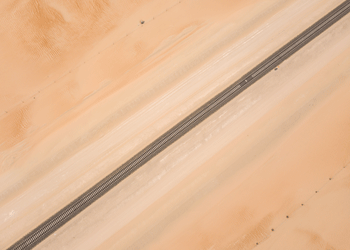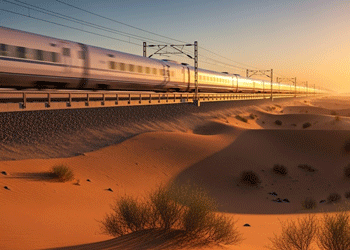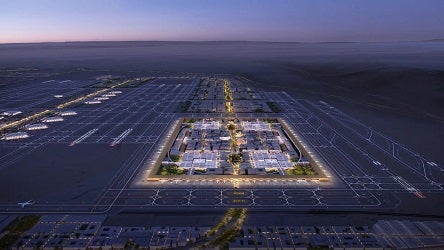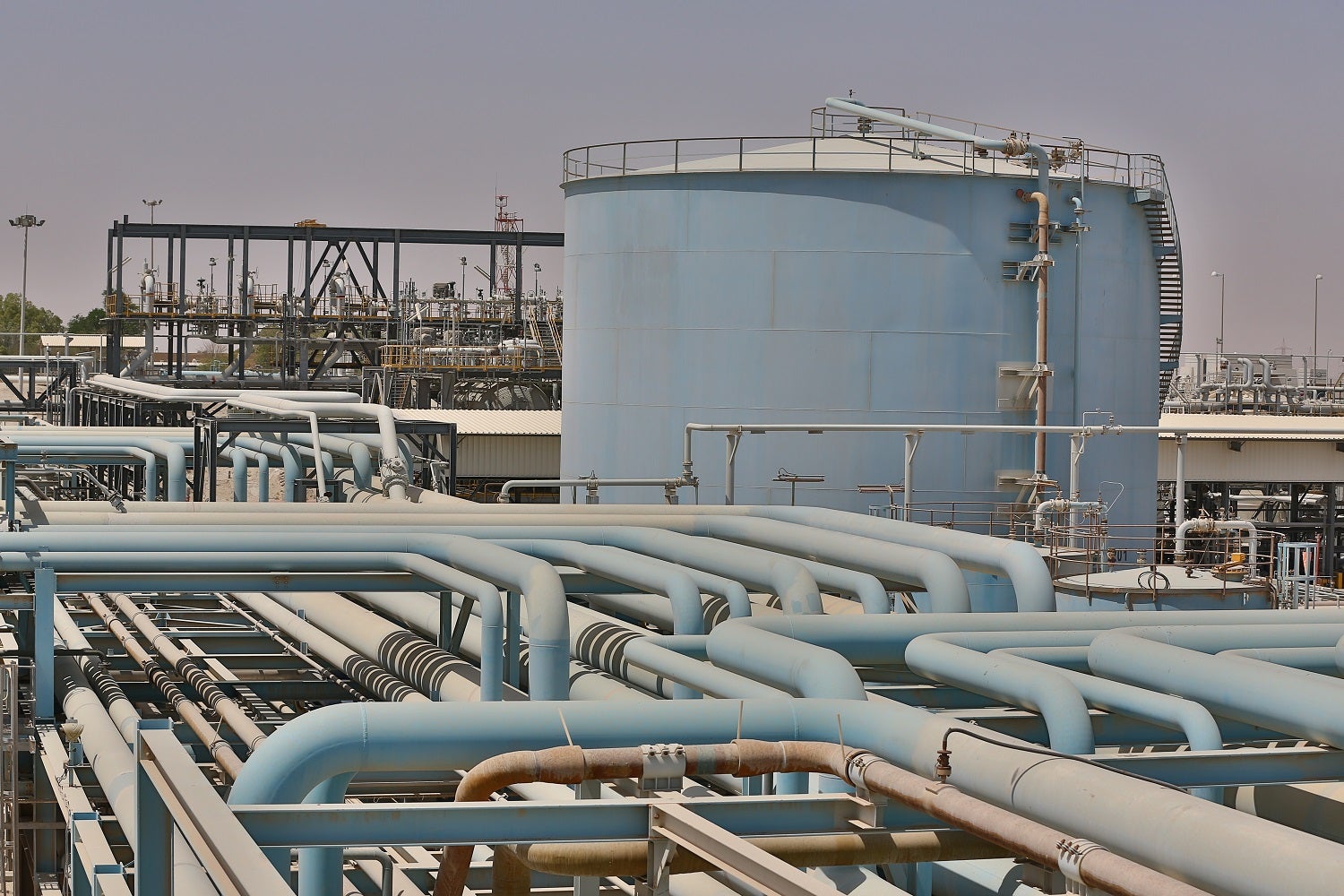EuroChem eyes Mena food security opportunity
24 August 2023

EuroChem Group is one of the top three global fertiliser producers and is one of only three firms worldwide with manufacturing capacity in all three primary nutrient groups: nitrogen, phosphates and potash.
Headquartered in Switzerland, EuroChem operates manufacturing facilities in Belgium, Brazil, Kazakhstan, Lithuania and Russia, employing over 27,000 people in 40 countries. Its products are exported to more than 100 countries.
In the wake of the Russia-Ukraine war, however, the company has found itself caught in the net of economic sanctions imposed by the EU and its member states on companies doing business in Russia.
 The financial sanctions, which included the freezing of its bank accounts, caused EuroChem to look to set up a branch outside Europe from which it could continue to do business with its customers. The company opened a trading outpost in Dubai earlier this year.
The financial sanctions, which included the freezing of its bank accounts, caused EuroChem to look to set up a branch outside Europe from which it could continue to do business with its customers. The company opened a trading outpost in Dubai earlier this year.
“Recently, we have moved some of our trading functions to Dubai to be closer to our clients in Asia, Africa and the Indian subcontinent. These regions present great growth opportunities for our business and will add to our strong market presence in Europe and the Americas,” says Samir Brikho, executive chairman and CEO of EuroChem Group.
“While EuroChem remains a Swiss company with global operations across most major agricultural markets, establishing this new branch in the Middle East will position us to expand our operations in the region, as well as across Africa and Asia.”
Regional strategy
EuroChem is looking to tap into the opportunities presented by the efforts of countries in the Middle East and North Africa (Mena) region to address food security challenges.
“We believe the region presents production and sales opportunities that are aligned to our long-term growth ambitions. We are discussing partnerships and investments that could further bolster our regional presence,” Brikho says.
“We know the potential is there. In 2022, EuroChem sold almost 140,000 tonnes of fertilisers and industrial products to the Mena region, including more than 40,000 tonnes sold to the Middle East,” he says, adding that the firm is also committed to making a contribution to food security in Africa.
“We recently appointed a head of strategy for Africa who will help us to identify opportunities for investment on the African continent.”
The availability of commercially-feasible natural gas as a feedstock is one of the key criteria for fertiliser producers such as EuroChem to consider when investing in output expansion projects.
“Gas is an essential feedstock for the production of nitrogen fertilisers and an important input for phosphate fertilisers. Both fertiliser types are produced by EuroChem. As with all input materials, the availability of natural gas, at the right price and in proximity to our operations, is essential for our production and business model,” Brikho says.
When it comes to potentially expanding EuroChem’s business in the UAE beyond the sales branch, Brikho says: “The UAE is perfectly positioned as a major commercial, manufacturing, logistics and export hub with more than 40 multidisciplinary freezones.
“However, fertiliser production is reliant on proximity to its raw material supply chain of ammonia, natural gas, phosphate rock and potash.
“At present, we have no plans to invest in production facilities in the UAE, but if we identify opportunities that make business sense, then it will most certainly be considered.”
Addressing food security
Food security is a growing global challenge, and for the Mena region, which is primarily an importer of food products, the challenge is steep.
The situation has been made worse by rising global inflation spiking food prices, especially those of agricultural produce.
The high cost of fertilisers for farmers has played a part in pushing food prices even higher in recent months, mainly as a consequence of the Russia-Ukraine war.
“The fertiliser industry has faced multiple sanctions-related obstacles that have disrupted production, access to finance, logistics and supply chain networks. Taken together, this had a devastating impact on global production last year,” says Brikho.
The fertiliser industry has faced multiple sanctions-related obstacles that have disrupted production
“In Europe in particular, the inconsistent application of EU policies relating to sanctions had profound effects that curtailed production and caused shutdowns of European fertiliser production facilities. This led to reduced supply and availability and drove up costs.”
During last year’s peak, fertiliser prices increased by up to 300 per cent compared to 2021, affecting farmers globally, he continues.
“Now, we are seeing the longer-term impacts this has had on food availability and prices globally, where it is always those who can least afford it who suffer the most.”
EuroChem is doing its part to address food security and challenge the issue of rising costs, the CEO says.
“At EuroChem, we are united with international farmers and those from regions such as Mena that rely heavily on food and fertiliser imports.”
International governments need to put policies in place that "protect the global agricultural supply chain from the types of disruption and volatility brought on by geopolitical events and sanctions that we have experienced over the last year”, Brikho adds.
“We have to work together to mitigate against shocks that continue to impact food production, availability and the price of feeding our communities – and in particular those communities in poorer countries that are the most vulnerable.”
Main image: EuroChem's facilities in Antwerp, Belgium
Exclusive from Meed
-
 SAR tenders $1bn phosphate rail track doubling package
SAR tenders $1bn phosphate rail track doubling package4 December 2025
-
 Omniyat appoints The Alba residences contractor
Omniyat appoints The Alba residences contractor4 December 2025
-
 Saudi Arabia accelerates its rail revolution
Saudi Arabia accelerates its rail revolution4 December 2025
-
 King Salman airport tenders fuel facility PPP
King Salman airport tenders fuel facility PPP4 December 2025
-
 Kuwait gas project expected to be worth more than $3.3bn
Kuwait gas project expected to be worth more than $3.3bn4 December 2025
All of this is only 1% of what MEED.com has to offer
Subscribe now and unlock all the 153,671 articles on MEED.com
- All the latest news, data, and market intelligence across MENA at your fingerprints
- First-hand updates and inside information on projects, clients and competitors that matter to you
- 20 years' archive of information, data, and news for you to access at your convenience
- Strategize to succeed and minimise risks with timely analysis of current and future market trends

Related Articles
-
 SAR tenders $1bn phosphate rail track doubling package
SAR tenders $1bn phosphate rail track doubling package4 December 2025

Register for MEED’s 14-day trial access
Saudi Arabian Railways (SAR) has tendered a SR4bn-plus ($1bn) contract to add another track to its existing phosphate railway network, connecting the Waad Al-Shamal mines to Ras Al-Khair in the Eastern Province.
The project will span about 100 kilometres from the AZ1/Nariyah Yard to Ras Al-Khair.
The scope includes track doubling, alignment modifications, new utility bridges, culvert widening and hydrological structures, as well as the conversion of the AZ1 siding into a mainline track.
The scope also covers support for signalling and telecommunication systems.
The tender notice was issued in late November, with a bid submission deadline of 20 January.
Switzerland-based engineering firm ARX is the project consultant.
MEED understands that this is the first of four packages that SAR is expected to tender imminently for the phosphate railway line.
The other packages expected to be tendered shortly include the second section of track doubling, the depot and the systems package.
In 2023, MEED reported that SAR was planning two projects to increase its freight capacity, including an estimated SR4.2bn ($1.1bn) project to install a second track along the North Train Freight Line and construct three new freight yards.
Formerly known as the North-South Railway, the North Train is a 1,550km-long freight line running from the phosphate and bauxite mines in the far north of the kingdom to the Al-Baithah junction. There, it diverges into a line southward to Riyadh and a second line running east to downstream fertiliser production and alumina refining facilities at Ras Al-Khair on the Gulf coast.
Adding a second track and the freight yards will considerably increase cargo-carrying capacity on the network and facilitate the development of increased industrial production. Project implementation is expected to take four years.
State-owned SAR is also considering increasing the localisation of railway-focused materials and equipment, including the construction of a cement sleeper manufacturing facility.
https://image.digitalinsightresearch.in/uploads/NewsArticle/15200393/main.gif -
 Omniyat appoints The Alba residences contractor
Omniyat appoints The Alba residences contractor4 December 2025
Dubai-based private real estate developer Omniyat has appointed UK-headquartered firm Innovo Build as the main contractor for its The Alba Residences Dorchester Collection project.
The project features three towers offering 209 residential apartments on the Palm Jumeirah in Dubai.
The main construction works have started, and the project is slated for completion by 2028.
Innovo Build has also built Omniyat’s other signature projects on the Palm Jumeirah, including Ava, Orla and the Orla Infinity Dorchester Collection.
The enabling works have been completed. The local firm International Foundations Group undertook the foundation works.
Dubai-based Engineering Design Consultancy Group is the project's lead consultant.
Founded in 2005 by Mahdi Amjad, Omniyat is one of the top-end property developers in the Dubai real estate market.
Over the years, the firm has delivered landmark projects in Dubai such as The Opus by Omniyat, One at Palm Jumeirah and The Lana, Dorchester Collection, Dubai on Marasi Bay.
These projects have done more than create new icons; they have helped attract and anchor global capital in the UAE. Ultra-high-net-worth individuals and institutional investors alike are increasingly looking for assets in the region that combine scarcity with long-term value creation.
Omniyat’s portfolio is built around that proposition. According to market data, the company captured more than one-third of transactions in Dubai’s $10m-plus residential segment in 2024, underscoring its leadership at the very top of the market.
In 2024-25, the group raised approximately $900m through two sukuk issuances, sharia-compliant investment certificates widely used across the region that provide asset-backed returns instead of conventional interest: a $500m green sukuk followed by a $400m issuance later in the year.
The second transaction was more than twice oversubscribed, with improved pricing compared to the debut deal.
Omniyat is also deploying capital in the commercial segment. It has projects such as Lumena and Enara in the pipeline, reflecting rising demand for ultra-luxury workplaces that offer the same level of experience and amenities as high-end residential and hospitality schemes.
https://image.digitalinsightresearch.in/uploads/NewsArticle/15200159/main.png -
 Saudi Arabia accelerates its rail revolution
Saudi Arabia accelerates its rail revolution4 December 2025
Saudi Arabia stands at a pivotal moment. Its population – around 35 million and rising – is overwhelmingly young and increasingly urban. Major cities like Riyadh – approaching 8 million residents – and Jeddah are experiencing rapid growth in population and activity, increasing demand for efficient mobility solutions. After decades of car-focused development, there now exists an opportunity to introduce new modern multimodal transport solutions in line with the objectives of Vision 2030.
Rail offers an answer to urban and economic pressures. Each train can remove hundreds of cars from the roads, cutting congestion and commuting times. Rail also aligns with Saudi Arabia’s environmental commitments.
Efficient mobility is key to Riyadh’s ambition to rank among the world’s top city economies. A reliable metro bolsters productivity as workers spend less time in traffic, boosts retail and tourism, with easier access to malls and attractions, and increases real estate values around stations. It also expands access to opportunity by providing safe and convenient transportation for women and youth entering the workforce. Similarly, intercity rail links can unite labour markets and connect people to jobs and services across the region.
Rail development is also central to Saudi Arabia’s strategy to become a global logistics and tourism hub. Launched in 2021 as part of Vision 2030, the National Transport and Logistics Strategy (NTLS) explicitly prioritises expanding the rail network to connect key cities, ports and economic zones. The kingdom aims to roughly double its rail network, adding more than 5,000 kilometres of new tracks. Saudi Arabia can unlock economic potential in underdeveloped regions, facilitate domestic tourism (e.g. convenient travel to cultural and religious sites) and streamline freight movement.
An integrated rail system also enhances resilience by providing alternative transport modes to complement roads and aviation, making the overall economy more robust against shocks such as oil price fluctuations or air travel disruptions.
The time is ripe for rail – it addresses urgent urban challenges and propels the kingdom towards its Vision 2030 objectives of sustainability, connectivity and diversified growth
Current and planned projects
Public transportation in Saudi cities is targeted to rise from 1% to 15% by 2030. Major investments are already under way or planned across both passenger and freight rail:
Riyadh Metro: A flagship $22.5bn project, the new six-line Riyadh Metro network (176km, 85 stations) is set to carry more than a million passengers daily and reduce traffic volumes by an estimated 30%.
Haramain High-Speed Railway: Completed in 2018, this 450km electric high-speed line connects the holy cities of Mecca and Medina via Jeddah at speeds up to 300km/h. The Haramain line, with a capacity of 60 million passengers a year, has already transported more than 20 million travelers – dramatically cutting travel times for pilgrims and residents while offering a comfortable, climate-friendly alternative to highway driving.
Saudi Landbridge Project: The Landbridge is a planned 1,300km railway linking the Red Sea coast to the Arabian Gulf. This new line will connect Jeddah’s port with Riyadh and onward to Dammam on the Gulf, including a spur to the industrial city of Jubail. By creating the first direct east-west rail corridor across Saudi Arabia, the Landbridge will revolutionise freight logistics. Transport times for containers and goods will shrink from days by truck or ship to mere hours by rail, slashing logistics costs. The Landbridge will also carry passengers, enabling fast travel between major cities.
GCC Regional Rail Connectivity: This 2,100+km network – slated for completion around 2030 – will tie together all six GCC states. Key corridors for Saudi Arabia include a line north to Kuwait City-Riyadh, and another south linking Riyadh with Doha, Qatar (via the Saudi-Qatar border at Salwa). There is also a planned connection from Dammam eastward via a new causeway to Bahrain. Saudi Arabia, by virtue of its geography, will host the largest share of the GCC rail route, effectively becoming the backbone of Gulf connectivity.
Q-Express to Qiddiya: Qiddiya, an upcoming entertainment city west of Riyadh and one of the Vision 2030 gigaprojects, will be connected to Riyadh’s King Khalid International airport by a high-speed rail line. Planners envision using cutting-edge technology such as magnetic-levitation (maglev) trains to whisk visitors from the airport to Qiddiya in record time. This roughly 40km connection, being structured as a public-private partnership (PPP), will enhance Qiddiya’s accessibility for international tourists and Riyadh residents, while showcasing futuristic transit tech. The Q-Express is part of a broader strategy to integrate new economic cities, such as Qiddiya, Neom and others, into the national transport grid from the outset, ensuring these developments are well-connected and sustainable.
Financing Rail Projects in Saudi Arabia
Given the Vision 2030 emphasis on private sector participation, Saudi Arabia has a diverse range of financing tools for its rail programme:
PPPs: In a PPP, private consortiums can design, build, finance and often operate infrastructure, sharing risks and rewards with the public sector. Saudi authorities see PPPs as a way to deliver projects efficiently while conserving public capital for other priorities. The Riyadh Metro, while government-funded during construction, will involve private operators for its operations and maintenance contracts. More directly, the upcoming Qiddiya rail link is planned as a PPP concession, with international firms invited to invest and bring innovative technology. The long-delayed Landbridge project, after earlier attempts, is now also expected to be executed via a PPP/BOT (build-operate-transfer) structure, overseen by Saudi Railway Company (SAR) and the Public Investment Fund (PIF).
Islamic Finance: Saudi Arabia’s leadership in Islamic finance makes sharia-compliant funding mechanisms a natural fit for its rail investments. Project sponsors and government-related entities have the option to issue sukuk (Islamic bonds) or use Islamic project finance structures to fund rail construction. These instruments attract capital from local and regional banks and funds that prefer sharia-compliant assets. For example, the PIF has raised billions through sukuk to support infrastructure development. Rail projects – which generate steady long-term cash flows and tangible assets – are well-suited to Islamic finance principles like asset-backing and profit-sharing. This approach also resonates with the cultural and religious context, making public support for these projects even stronger.
Sustainable Finance: Saudi Arabia is turning to sustainable finance to fund rail and transit as sustainability becomes a global investment theme. Green bonds and loans fund environmental projects and rail qualifies by cutting emissions. Through their green bond frameworks, the government and PIF have issued multibillion-dollars bonds that include clean transport. By identifying projects aiming to improve environmental outcomes, Saudi Arabia can tap into the growing pool of internal ESG-focused investors who are eager to finance low-carbon infrastructure. This can potentially lower borrowing costs and enhance the kingdom’s image as a sustainable development champion. Additionally, global development banks and export credit agencies have shown interest in supporting Gulf rail projects on climate grounds. For instance, a significant portion of the Riyadh Metro’s rolling stock and systems was financed via export credits, and future rail lines could attract sustainable development loans.
Transforming transport
The time is ripe for rail – it addresses urgent urban challenges and propels the kingdom toward its Vision 2030 objectives of sustainability, connectivity and diversified growth. As of October 2025, Saudi Arabia’s rail sector has a clear baseline: strong urban demand and Vision 2030 policy direction; a proven Haramain high-speed corridor; the six-line Riyadh Metro; and a pipeline centered on the Landbridge, GCC links and connectors such as the Q-Express. The kingdom has set targets to raise public transport’s share from 1% to 15% by 2030 and plans to add more than 8,000km of track under the NTLS. Financing pathways are established with early application on major assets. Together, these facts define the current state and provide a benchmark against which delivery, ridership, emissions and broader economic outcomes can be measured as projects move from plan to operation.
 https://image.digitalinsightresearch.in/uploads/NewsArticle/15200029/main.gif
https://image.digitalinsightresearch.in/uploads/NewsArticle/15200029/main.gif -
 King Salman airport tenders fuel facility PPP
King Salman airport tenders fuel facility PPP4 December 2025

Register for MEED’s 14-day trial access
King Salman International Airport Development Company (KSIADC) has started the procurement process for new and expanded aircraft fuel storage facilities, as well as a fuel distribution network and hydrant systems servicing new aircraft parking areas at the King Salman International airport (KSIA) in Riyadh.
The closing date for bid submissions is 1 March.
The project will be implemented as a public-private partnership on a design, build, finance, operate and maintain basis.
The concession period is 30 years.
The project assets include a new aviation fuel farm, a new into-plane (ITP) service facility and other associated equipment.
The core component of the project is the new fuel farm facility, which will comprise six above-ground storage tanks with a combined total capacity of 130,000 cubic metres by 2050; 24 fuel pumps with associated filter sets, control panels and instrumentation; and two fire protection water storage tanks with a capacity of over 25 million gallons.
The other facilities include a loading/unloading gantry, a fueler loading facility, a control room, a receipt area, product recovery, waste product handling, a water treatment facility and a test rig.
The project will complement and eventually integrate with the current fuel network and hydrant system servicing the existing aircraft parking areas at the airport.
Interested bidders can send their credentials to affproject@ksia.com.sa The current network is operated by the state-owned oil company Saudi Aramco, which will continue to handle the existing facility until operations are transferred to the selected concessionaire.
Saudi Aramco will continue to be the sole fuel supplier to the facility.
Construction of the new facility will be undertaken in phases.
KSIADC aims to achieve financial close of the project by the end of 2026.
Construction works on the project’s first phase are slated for completion by early 2029.
KSIADC is preparing the delivery of several key components of the KSIA project. In November, MEED exclusively reported that the client is targeting mid-2026 to award the contract for the construction of Terminal 6 at the airport.
In August, MEED exclusively reported that KSIADC had invited contractors to submit their best and final offers for the first phase of Terminal 6 and the Iconic Terminal.
The contract award is also imminent for the construction of the third runway of the airport.
Project scale
The project covers an area of about 57 square kilometres (sq km), allowing for six parallel runways, and will include the existing terminals at King Khalid International airport. It will also include 12 sq km of airport support facilities, residential and recreational facilities, retail outlets and other logistics real estate.
The airport aims to accommodate up to 100 million passengers by 2030. The goal for cargo is to process 2 million tonnes a year by 2030.
Saudi Arabia plans to invest significantly in its aviation sector. Riyadh’s Saudi Aviation Strategy, announced by the General Authority of Civil Aviation, aims to triple Saudi Arabia’s annual passenger traffic to 330 million travellers by 2030.
It also aims to increase air cargo traffic to 4.5 million tonnes and raise the country’s total air connections to more than 250 destinations.
https://image.digitalinsightresearch.in/uploads/NewsArticle/15199937/main.jpg -
 Kuwait gas project expected to be worth more than $3.3bn
Kuwait gas project expected to be worth more than $3.3bn4 December 2025

State-owned Kuwait Gulf Oil Company (KGOC) is now expecting its project to develop an onshore gas plant next to the Al-Zour refinery to be worth more than KD1bn ($3.3bn), according to industry sources.
The expected value of the onshore production facility (OPF) has increased after changes to the scope, and the project could ultimately be worth as much as KD1.2bn ($3.9bn), sources close to the project told MEED.
One source said: “Previously, KGOC had been talking about a budget of KD850m, but since then the value has gone up significantly.”
As the project has expanded, there have been ongoing discussions about splitting it into several packages, but, as things stand, KGOC still intends to tender it as a single package, sources said.
The project is being tendered on a fast-track basis and is currently on schedule to see its invitation to bid issued in January 2026.
In September, MEED reported that the invitation to bid is anticipated to be issued before the end of the year.
Since then, the schedule has been shifted back slightly, but there is still a chance that it will be tendered before the end of the year if other parts of the pre-tender process proceed smoothly.
The plant will have the capacity to process up to 632 million cubic feet a day (cf/d) of gas and 88.9 million barrels a day of condensates from the Dorra offshore field, located in Gulf waters in the Saudi-Kuwait Neutral Zone.
In July, MEED reported that KGOC had initiated the project by launching an early engagement process with contractors for the main engineering, procurement and construction (EPC) tender.
France-based Technip Energies completed the contract for the front-end engineering and design (feed).
https://image.digitalinsightresearch.in/uploads/NewsArticle/15197408/main.jpg



